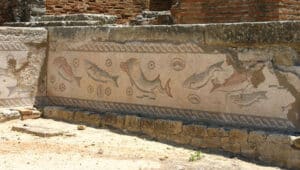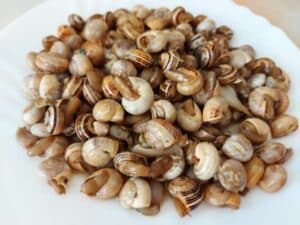Carnations are one of the oldest cultivated flowers in the world, first mentioned in Greek literature around 2,000 years ago. Theophrastus, a Greek philosopher and the successor to Aristotle, referred to them as flowers of the gods, and the Greeks would weave them into crowns for their athletes, which may have led to the name “coronation” flower.
There are many legends and myths that point to the origin of carnations. According to one, Diana, goddess of the hunt and wild animals, one day came across a young shepherd so handsome that, in fear of being seduced, she tore out his eyes and threw them to the ground. Red carnations then bloomed where his eyes had fallen.
Another ancient Christian legend tells us that, after the Crucifixion of Christ, carnations first emerged in the spots where the tears of the Virgin Mary fell to the earth.
Both stories depict carnations as symbols of transformation and hope, where new life emerges from a tragic event. This symbolism, by sheer fate, perfectly aligns with the role they played during the 25th of April revolution, also known as the Carnation Revolution.
In 1974, Portugal had been under the control of an authoritarian regime for over four decades known as the Estado Novo, which translates to “New State”. Established in 1933, under the leadership of António de Oliveira Salazar, the regime aimed to modernise Portugal while maintaining traditional values and social order. The Catholic Church also played a significant role in supporting the regime, contributing to its conservative and authoritarian character.
However, even though the regime pursued policies aimed at industrialisation and economic development, Portugal remained largely agrarian and backward compared to other European countries. The government had strong control over people’s freedom, the economy, and the media, which led to widespread poverty, particularly in rural areas.
Overall, under Salazar’s regime, Portugal remained largely isolated from the rest of Europe, both politically and economically, and many would characterise the Estado Novo by its repressive policies, censorship, and suppression of political dissent.
On the 25th of April 1974, Celeste Caeiro, who would later become known as “Celeste of the Carnations”, was 40 years old and working in a restaurant called Sir near Marquês de Pombal. It was the first “self-service” restaurant in Lisbon and, that day, it was commemorating its one-year anniversary. To celebrate, a carnation was to be offered to all the women, and a glass of port to the men.
For Celeste, the day started like any other workday. However, when she arrived at the restaurant, the door was closed, and she was instructed by her boss to go home as a revolution was underway. So, Celeste and the rest of the employees each took a bunch of carnations and headed home.
After a short metro ride, she got off at the Rossio station and started walking towards Chiado, where she was renting a room. On Carmo Street, she encountered a group of soldiers on top of a tank and one of them asked Celeste for a cigarette. However, since she didn’t smoke, all she had to offer was a carnation from the bouquet she was carrying.
He accepted the carnation and put it in the barrel of his rifle. His comrades then replicated the gesture and, not long after, all the florists in downtown Lisbon were busy distributing carnations to the rest of the soldiers, as the flowers were in season.
Although the revolution began as a military coup to overthrow the regime, which they saw as oppressive and outdated, thousands of Portuguese took to the streets in support of the military insurgents, despite the military advising civilians to stay home. This spontaneous civilian involvement turned the military coup into a popular revolution, demanding an end to the dictatorship and the establishment of democracy.
A central gathering point was, of course, the flower shops in downtown Lisbon, and the image of civilians and soldiers putting carnations in their guns was broadcast on television around the world, ultimately giving the revolution its name.
It has now been 50 years since the revolution, and the 25th of April remains a national holiday, where people now commemorate the enduring value of democracy, civil liberties, and the courage of those who stood up against oppression. Similarly to the legends of Diana and the Virgin Mary, the image of carnations adorning rifles symbolises not only the triumph of the revolution but also the hope for a better future where freedom and justice prevail.
|| features@portugalresident.com
Jay works for a private charter airline, and is also a UX designer and aspiring author who enjoys learning about history and other cultures




















